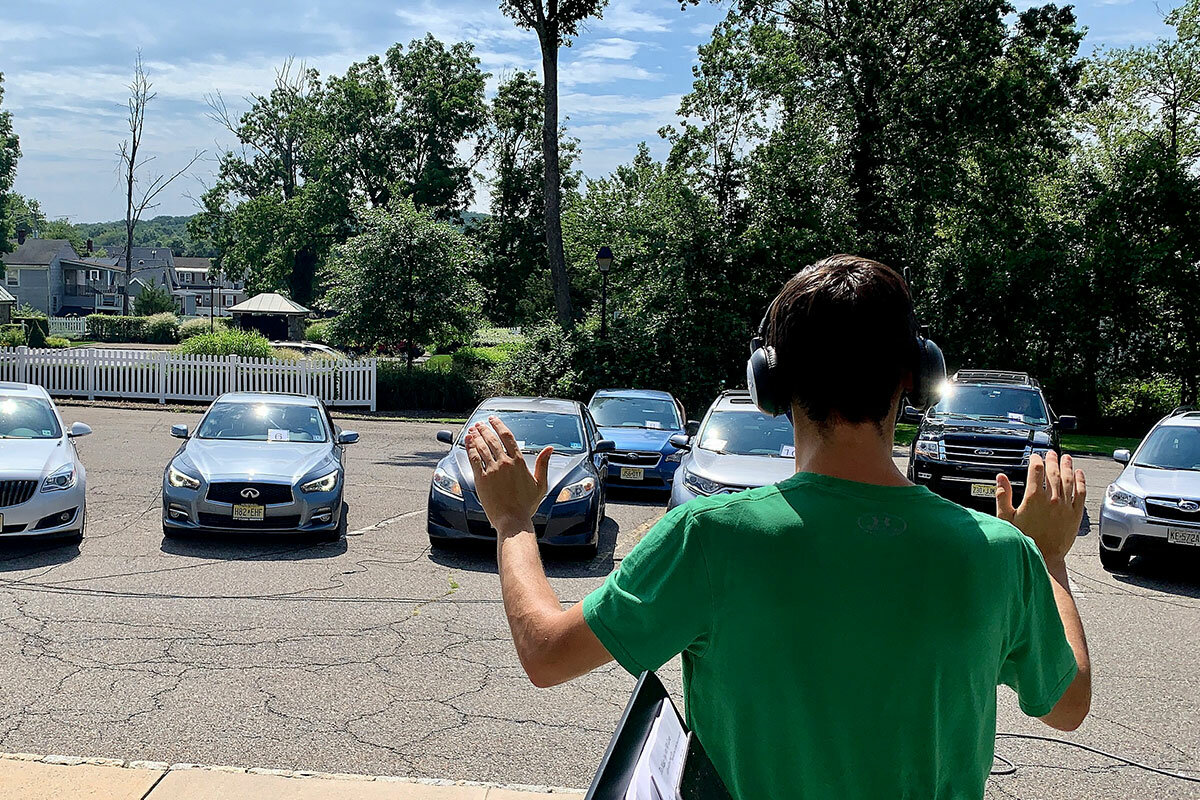Choirs in cars: How singers found joy during the pandemic

 Stephen Humphries
Stephen Humphries
At first, they tried Zoom. During the initial months of the pandemic, after health officials had warned against singing in gatherings, choirs convened online to rehearse. The results were cacophonous. Fractional delays in sound hampered synchronous singing.
A new documentary, “The Drive To Sing,” tells the story of how ingenuity enabled choral groups to safely commune in 2020. The story begins in the Massachusetts home of the film’s director, Bryce Denney, who has a family of singers.
“We started thinking, ‘OK, how in the world would people in multiple spaces be able to hear each other well enough, fast enough?’” says Mr. Denney.
He went back to 1980s technology: microphones that tune in to FM radio waves. When his wife, Kathryn, and two daughters sang into microphones from different rooms, their voices harmonized with zero time lag.
Mr. Denney made an online connection with professional singer David Newman, who’d been first to take a similar idea one step further. He’d conducted people singing into microphones in their cars. Mr. Denney and Mr. Newman shared their innovation via the internet. “The Drive To Sing” chronicles how at least 60 choirs in North America began to meet in parking lots, using wireless microphones so singers could remain inside their vehicles.
The Denneys filmed drive-in choirs such as the Somerset Hills Harmony chorus in Pluckemin, New Jersey.
“The people in New Jersey started out with 20, 30 people. And then by the end of the year, they had 80 or 100,” says Ms. Denney. “It was really something for people to look forward to, and something for people to get out of the house for, and not worry about being sick.”
The movie captures the value of joyful communion during a time of fear.
“It was emotional for a lot of people,” says Mr. Denney, whose movie has its cinema debut at Lonely Seal Film Festival in Boston on Saturday and will later be available for streaming online. “It was more meaningful than they even expected.”




